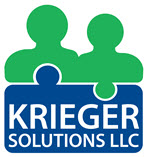Implementation
In our last post we talked about developing a strategy for recruiting board members. Once you have a plan, where do you go to find your pool of prospects? Some suggestions are:
- Asking current board members and staff for recommendations.
- Your clients and/or their family members.
- Staff from related organizations that you work with already.
- Local business leaders, especially from businesses you work with (many companies want their employees to be active in the community).
- Professional associations are places to find prospects with specific skills
- One executive director combined recruiting with his trips out in the community including talking to people he knew who he saw in the grocery store!
Potential volunteers are everywhere, some are just waiting to be asked.
There may be concerns about bringing some of these people on as board members.
- Those affiliated with other agencies could have a conflict of interest.
- Those referred by a board member could end up being a clique.
- Others may have personal agendas that don’t align with your agency.
That’s the reason why you need to start slow – invite them to become involved, not to become a board member right away. You’ll both get a chance to test the relationship out before making a big commitment.
When you find a prospect, before you ask them for a commitment:
- Get them excited about what you do – your mission and vision.
- Tell them about the great work you do, your mission, services you provide, and why this matters.
- Discuss challenges faced by your clients and how you help them meet these challenges.
Keep this optimistic and upbeat. You don’t want them to feel overwhelmed.
Once you have their interest, then mention one or two volunteer opportunities that you are looking for assistance with – helping with an event, or providing guidance in their area of expertise. As they become more engaged, you can ask them to take on additional roles, eventually leading to asking if they are interested in serving on the board… but don’t rush this!
Now that you have an active, engaged pool of prospects, your next step is to clearly outline what you want board members to actually do (and not do). While you should have a fairly detailed board orientation manual that outlines your overall board structure, process, roles and responsibilities, you should also have a short document that gives people an initial idea of a board member’s role.
In our next post we’ll talk about how to develop a “job description” for the board overall and for individual board members. We welcome your comments, suggestions and questions. Please feel free to email me at: Alan@KriegerSolutions.com
